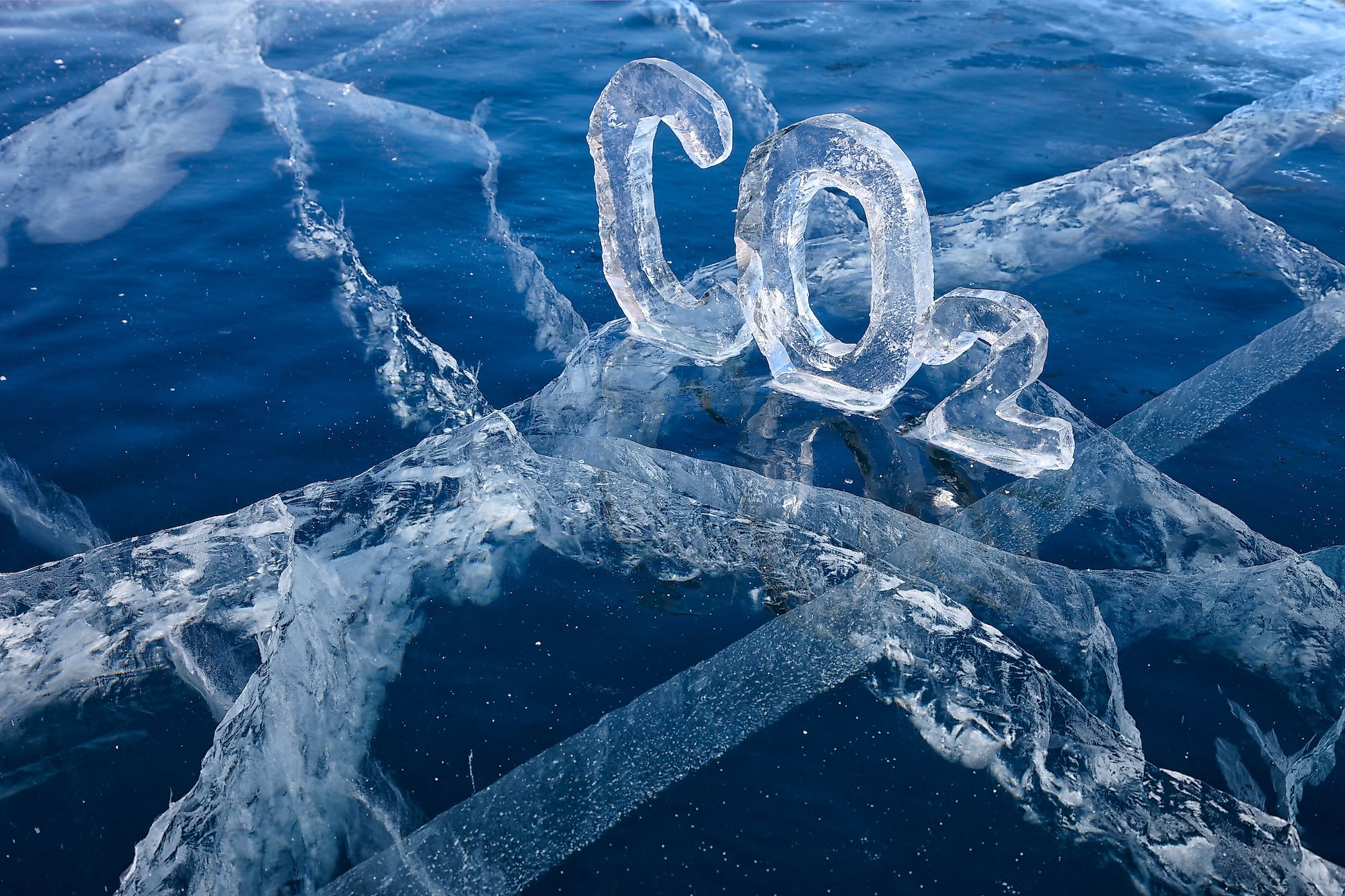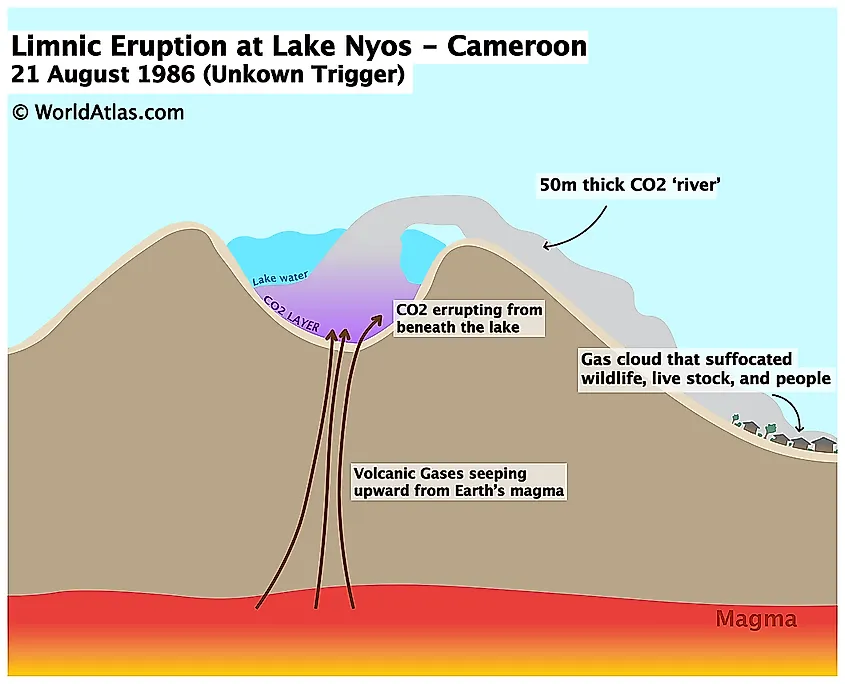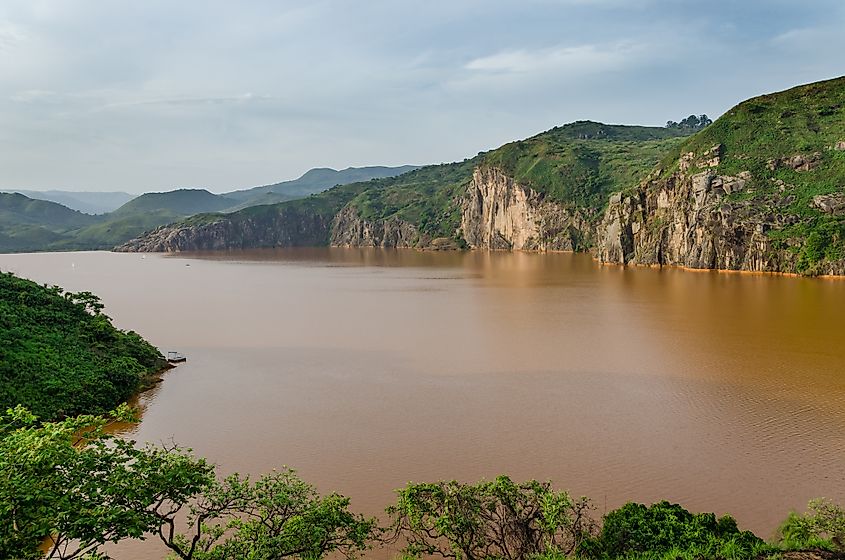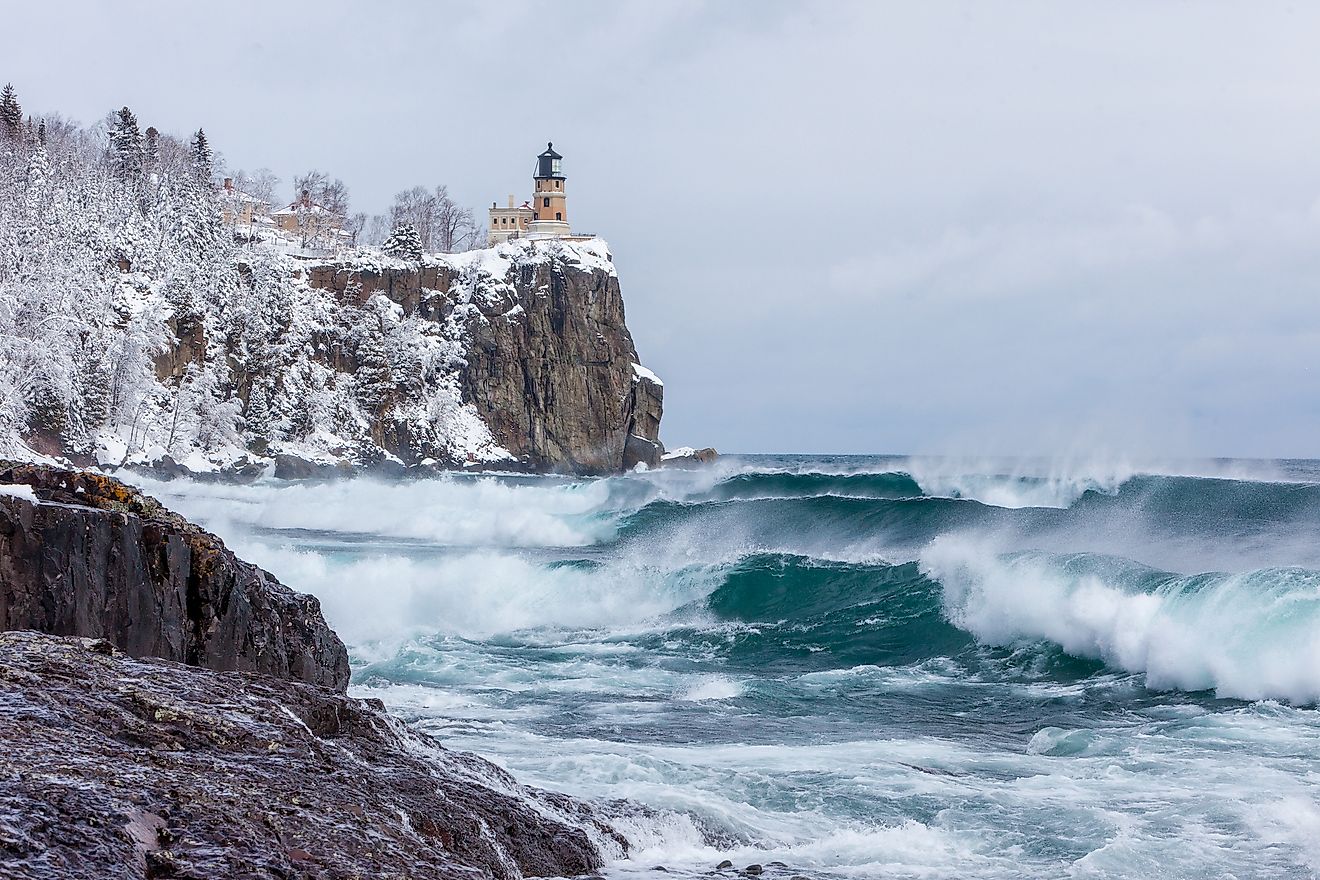
Limnic Eruptions: When Lakes Explode
A limnic eruption is defined as "a rare type of natural disaster in which dissolved carbon dioxide suddenly erupts from deep lake waters, forming a gas cloud capable of suffocating wildlife, livestock, and humans." Also known as a lake overturn, it can happen quickly, unexpectedly, and with severe consequences to any living things in the surrounding area. Certain factors need to be in place for a limnic eruption to occur:It is thought that these eruptions are generally triggered by seismic activity. Disruptions in the Earth's crust can cause underground shifts, triggering the explosions or releasing pressure in the area. This phenomenon, in turn, is thought to lead to the initial disruption that causes the eruption.
Earthquakes, volcanic activity, and other explosions can cause these triggers. Eruptions do not occur in all lakes, however. The lake has to be already limnically active. It means it contains water that is high in carbon dioxide. The lake must also have a cool lake bottom, as this indicates that the water in the lake does not have direct connections to a volcano. Direct volcanic interaction would have different results- such as a geyser reaction - and would not become limnic. A limnic lake must also have an upper and lower thermal layer with different carbon dioxide saturation. The sudden mixing of these layers causes the explosion, and the lake must be in proximity (but not directly connected to) seismic or volcanic activity.
Causes Of Limnic Eruptions

Limnic lake environments occur in waters where there is an extremely high level of carbon dioxide. Higher levels of carbon dioxide can be dissolved in water in areas of high pressure. Because of this, deep lakes can contain extreme levels of carbon dioxide in the lake bottom (and have lower levels towards the surface). It is also true in colder water, which again tends to be at the lake's bottom. The carbon dioxide itself is usually from decomposed plant or animal matter on the lake's floor. In these conditions, the lake is stable, but also on the verge of eruption at any time - much like an unopened can of carbonated liquid is stable, but will fizz once open and the pressure released. In the same way, a rise in temperature or a change in pressure can cause the carbon dioxide within the lake to be expelled from the water - usually quickly and violently.
Effects Of Limnic Eruptions
Limnic eruptions are quick, unexpected, and very deadly. Initially, carbon dioxide explodes out of the lake - much like a shaken-up can of carbonated liquid would once it is opened. Then, the dense carbon dioxide cloud forms over the lake and surrounding area. This gas is heavier than air, meaning it is a low-hanging cloud that settles along the Earth's surface. This gas cloud, due to its density, displaces lighter air. In essence, this means that the carbon dioxide cloud pushes out breathable air and removes oxygen from the areas affected by the cloud. Two major reactions occur in humans and other animals - they are unable to gain oxygen from the air, and they begin to suffocate, and/or the carbon dioxide poisons the body by causing natural body fluids to become too acidic.
Examples Of Limnic Eruptions

Though limnic eruptions are rare, there are a few well-known examples of these types of explosions. The first documented limnic eruption happened in 1984, in Lake Monoun, in Cameroon. This tragic explosion resulted in 37 fatalities caused by asphyxiation. Two years later, in 1986, some 1,700 human lives and 3,000 animal lives were lost outside Lake Nyos, which is also in Cameroon. An estimated 80 million cubic meters of carbon dioxide were expelled in this second explosion, which asphyxiated much of the surrounding town, preventing them from getting any oxygen. Lake Kivu sits between Rwanda and the democratic republic of the Congo.
Like the other exploded limnic lakes, Kivu holds a huge amount of carbon dioxide. There are also other concerns in the lake, including the high rates of methane dissociation and a steady increase in surface temperature. There is also potential volcanic activity nearby, in Mount Nyiragongo, an active volcano. These factors have led researchers to keep a close watch on the lake to stave off any potential disasters.











